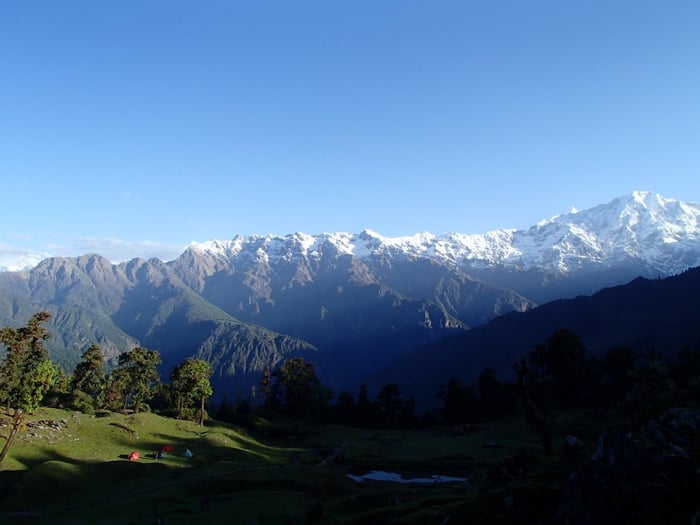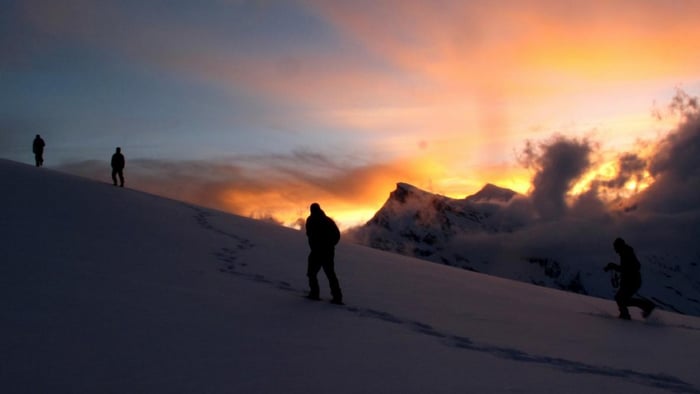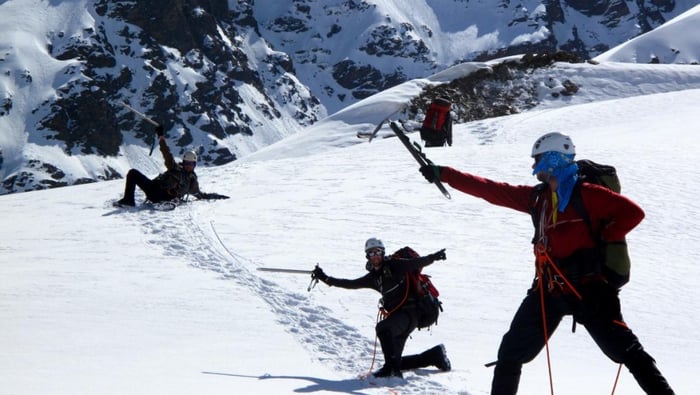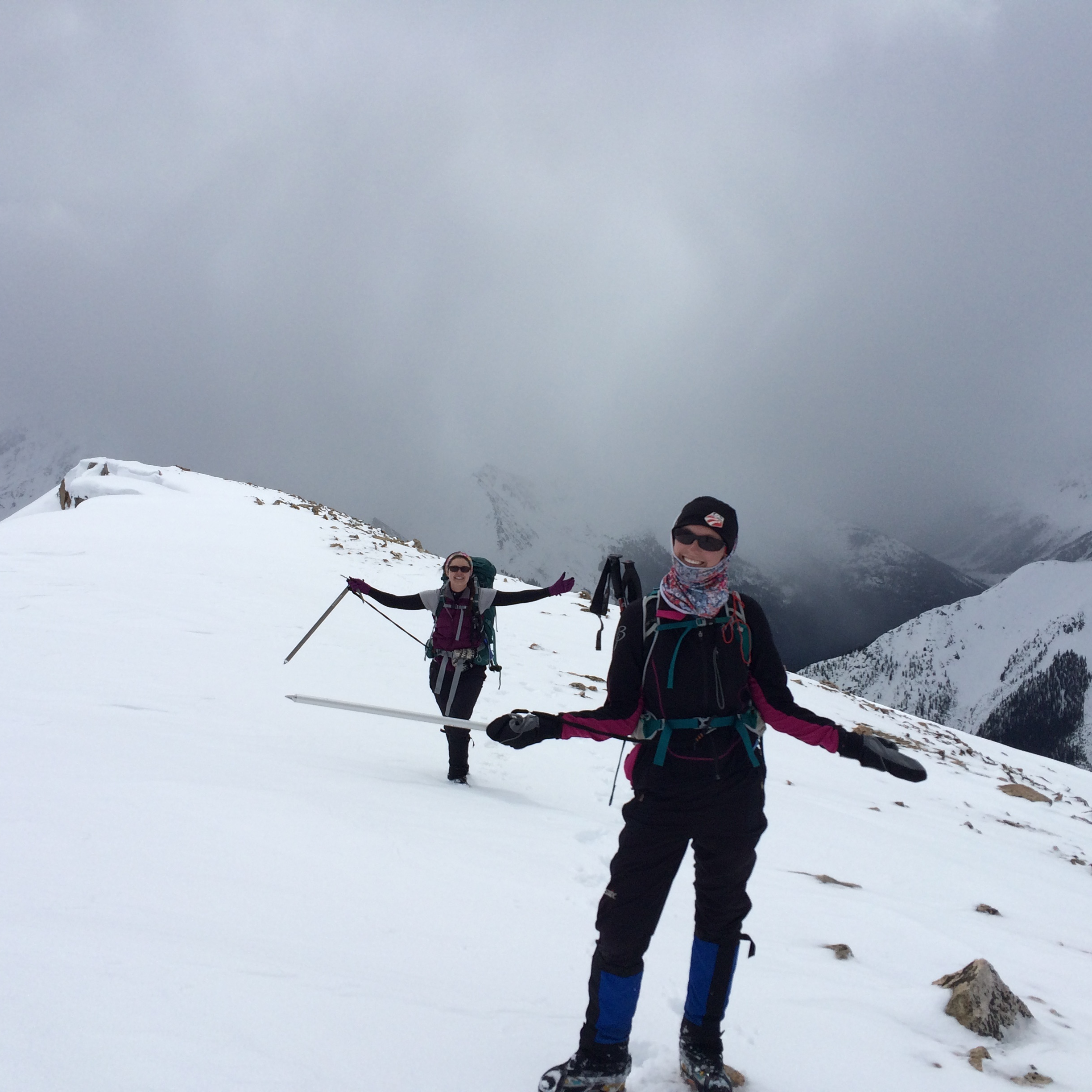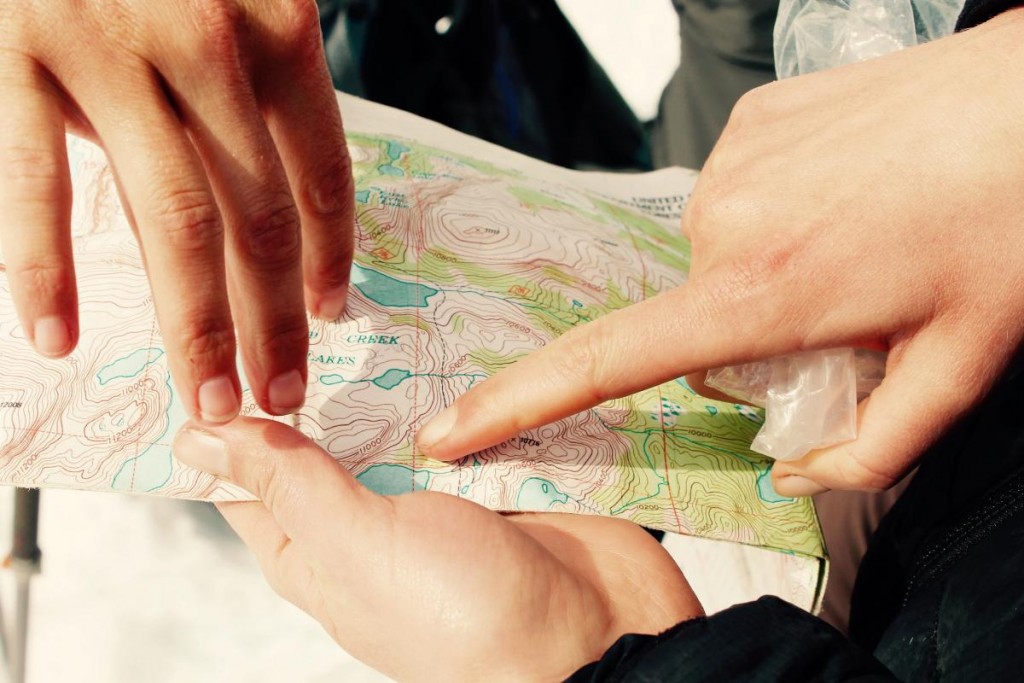I woke with the rising light, fully alert. No need to check my watch to know it was around 4:00am. We’d been in the backcountry a whole week; I was growing used to the dawn. I knew few others would be up until 5:30 or 6:00, but got up anyway; the sun would break the horizon between 4:30 and 5:00. Sunrise is the best time to see a clear sky in India in May—that’s fire season preceding the monsoons—and I wanted to marvel at the mountains that formed our backdrop.
When we’d set up camp around dusk, we noticed huge peaks to our north, shrouded in clouds. Later, a few of us pored over maps and discovered one was Dangthal, a 19,849-foot peak in the Kumaon Himalaya, with 22,510-foot Nanda Kot peeping over its shoulder and, to our dismay, 25,643-foot Nanda Devi hidden from our vantage behind the other two. Nanda Devi is one of the tallest mountains in India and the 23rd highest in the world.
We were the Himalaya Backpacking course, and the majesty of the peaks looming over 10,000 feet above us was inescapable. It was below these mountains that we learned to cook backcountry gourmet on MSR WhisperLite stoves, how to navigate different hiking paces, how to prevent ourselves from becoming dehydrated or hangry, and how to work together when we had only an “X” (a goal destination) but no marked trail to get us there.
As a teenager, I stared awestruck at alpenglow the few times I witnessed it. In India, I had the privilege of seeing it many, many times. Now, I seek it. Avidly.
I returned to Colorado in June 2013 with a more acute awareness of my own technical abilities and of what I could improve, a bolstered belief in the power of communication, practicing active decision-making, and striving to become ever more competent. I also returned with an idea planted in my head: that I loved backpacking, but that I wanted to push my technical skills further, to learn more.
The methodology I learned at NOLS provided me with tools to push myself and maximize my learning in my personal pursuits. In the “working world,” clocking 40 or more hours per week, it’s difficult for most of us to take off on a ten-day expedition, let alone a thirty-day one. But with trip planning skills and specific goals, it’s possible to maximize weekends. Over the last two years I have been doing just that, gradually developing mountaineering skills. I started with summer endeavors, pushing hikes longer and practicing navigation. I planned day trips with friends, taking charge of logistics from gear lists to timing. In the winter of 2014, it was time to take the next step and start working with snow conditions. If I ever want to attempt bigger mountains, like Orizaba in Mexico or peaks in Alaska, and I hope to, I need to get out year-round.
As I've pushed myself in the outdoors, I have learned about different types of crampons and the boots with which each is compatible. I know how to self-arrest on a snow slope a number of ways. I gained the knowledge to plan a weekend excursion camping on snow at high altitude on Mount Elbert, which at 14,433 feet is the second highest peak in the contiguous United States. These skills allow me to experience new facets of the world’s magic—more beautiful and extreme, deliciously inspiring.
My gains haven’t been limited to outdoor skills. On my course, I learned vivid lessons about balancing of self-criticism and self-acknowledgement on a sweltering day of leading peers in route-finding. When my group disagreed about a potential route or about appropriate expedition behavior, and still had to live with each other for several more weeks, we found (with the guidance of our instructors) a way to make the confrontation work. These lessons in turn helped me develop as a leader and gain key skills for tackling the peaks I hope to pursue.
In pursuing my goals, I’ve seen sunrises from within clouds, from wild valleys with only my hiking partners and birds for company, the rumble of cars and towns a world away. Paused, captured in a still, rosy glow spreading across snow-covered peaks. Lost my breath trudging along ridges in 40 mile-per-hour winds. Determinedly plunged my ice axe into hard snow ascending a couloir, carefully balancing the fear of situational awareness and the fear from learning in my challenge zone. Giggled hysterically as my partners and I attempted some comical imitation of glissading on softening low-slope snow during a descent. Have learned to enjoy a slow trudge, stepping only as quickly (or rather, slowly) as I can breathe, cherishing every lungful of rarified air.
My experience in the Indian Himalaya in May and June of 2013 increased my outdoor skills and my confidence. At the end of the course, when as per NOLS tradition we read Morgan Hite’s “Briefing for Entry into A More Harsh Environment,” I took it to heart. I’ve been striving to remember and live by those lessons ever since.
When we leave a NOLS course, we leave with so much more than incredible memories and the ability to cook on tiny camp stoves. We leave with a toolbox full of skills and experiences that allow us to build more, gain more, to continue navigating the outdoors and the rest of life as well. It is but one of many possible systems, but it’s one that works really, really well.
See this course: Himalaya Mountaineering
Explore all NOLS Mountaineering Courses!
Written By
Annalise Grueter
Annalise is a hiking fanatic and avid cloud-watcher. She is an alumna of NOLS Himalaya Backpacking Spring 2013 and was a Curriculum and Publications intern at NOLS. Her passions include cross country skiing, baking, trail running, backpacking, and calculating hiking times. She has taken several friends up their first 14,000 foot peaks in Colorado and looks forward to building her technical climbing and winter camping skills.

